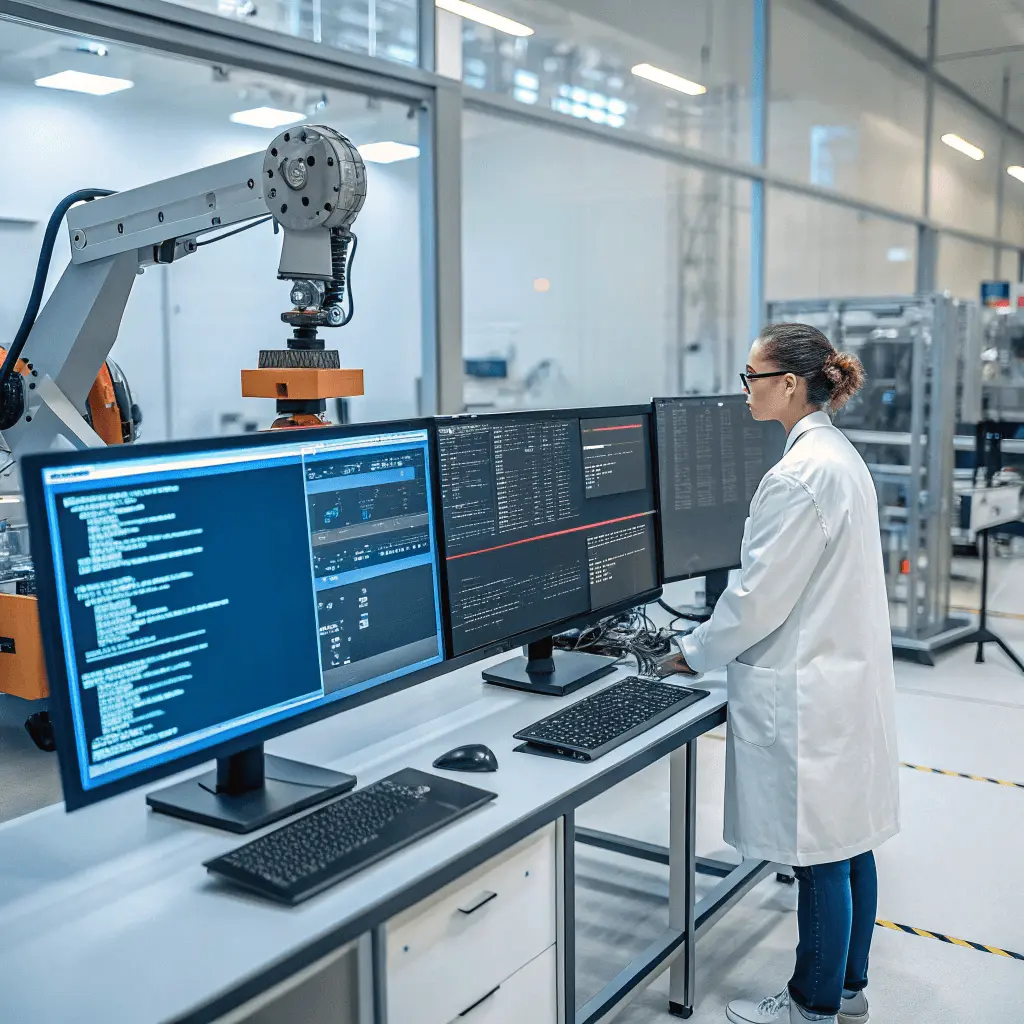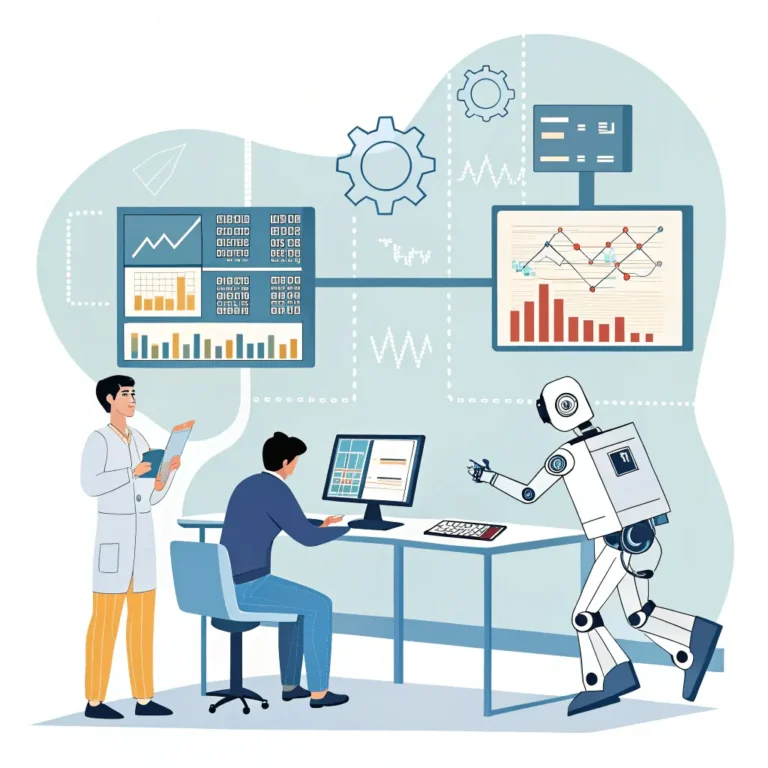
AI is changing the landscape of application delivery by providing speed and accuracy that only a model powered by AI can achieve, leading to the automated execution of tests, bugs, and performance testing. A growing number of organizations across various industries are introducing AI testing tools into their workflows to decrease development time, reduce costs, and deliver more reliable applications than ever before.
AI testing frameworks use machine learning, predictive defect analysis, and natural language processing to automate the development of smarter, self-healing test automation. As artificial intelligence (AI) evolves, its role in application testing will increase and continue to push the industry in the direction of more autonomous testing environments. This will not only speed up application development time frames but also improve the quality of the application overall.
In this article, we explore the changes AI is bringing to test automation, debugging, and performance analysis. We also discuss the benefits of utilizing AI-augmented testing tools and the future of AI-based application testing.
The fundamentals of AI in software testing
AI enhances application testing through machine learning, natural language processing, and deep learning to increase speed and efficiency across the planning, execution, and evaluation of tests. With AI-based testing, there is a new era of smarter test automation and AI accounts for previous test execution, learning from patterns and modifying test cases in real-time due to changing conditions of the tested application.
One prominent application of AI in testing is the generation of test cases. AI can analyze application performance, as well as user interactions, to produce appropriate test scenarios for testing critical application functionality. This is objectively better than the manual process of developing test cases that may take a long time and have inherent risks of unknowingly reflecting inadequacies (coverage and precision).
Artificial intelligence plays an important role in the use of self-healing automation to have the ability for test scripts to respond to changes in the UI or code without manual intervention. This is especially beneficial for software updates that can frequently disrupt regular automated tests used in Agile and DevOps. The use of AI-enabled debugging powers developers with the ability to investigate the actual root cause of problems by reviewing log files, looking at code changes, and contributing potential solutions.
Leveraging AI within application testing enables organizations to cycle faster through development into delivery; hold expenses for testing down, and improve application quality overall. The quickening ability of AI will lead to software test automation, and the defect forecast and performance will be sophisticated in terms of use within the domain growing increasingly more toward fully self-sufficient, smart frameworks for testing.
How does AI help developers debug efficiently?
In traditional debugging, developers usually have to go through miles of logs, recreate bugs, and manually examine their code. All of these can be very time-consuming and subject to human error.
AI-powered debugging tools can simplify this process since the tools apply machine learning, pattern detection, and predictive analysis to identify bugs, identify the source of bugs, and even recommend fixes. For instance, AI tools can review historical data on defects to identify patterns in the data and forecast where bugs are likely to occur before they negatively impact the application.
One of the greatest innovations that AI brought to the detection of bugs is automatic anomaly detection, through which AI reads huge datasets of logs and looks for anomalies and discrepancies in real time. Other than this, AI-driven tools like Microsoft’s DeepCode and Facebook’s SapFix analyze code automatically and scan for vulnerabilities, security issues, and logical issues, then come up with smart recommendations to the developers on what to do with them.
It is very typical for a developer to find a problem, peruse the logs, trace paths through execution, and then try to fix it. The debugging process can take a long time, requires a lot of domain knowledge, and can be erroneous at times. AI will revolutionize how developers debug and find bugs in applications or environments, resulting in a much faster, efficient, and accurate process, with little human effort relying on human effort and/or knowledge.
Below are how AI helps developers to debug:
Automated error detection: AI-based debugging tools analyze vast amounts of code and logs in real time to be able to identify outliers, vulnerabilities, and logical errors. They utilize machine learning or pattern recognition so that the AI can find issues that may not be noticeable to a developer, thus saving time and effort in debugging.
Determining root causes: Instead of attempting to trace a bug through the numerous layers of code, AI-based debugging tools can quickly identify the point of failure. The AI can look through code repositories, consider previous bugs, and evaluate dependencies, all in a matter of moments, to identify the location of a bug or source, which will enable the developer to fix things faster.
Anticipatory bug prevention: AI not only identifies current problems; it can also foresee possible errors before they arise. Through the examination of previous defects, AI can pinpoint vulnerable sections within the code and alert developers to potential issues, facilitating proactive debugging.
Log file examination and unusual activity identification: AI tools automate log examination by reviewing thousands of lines in real time to identify unusual patterns and system malfunctions. This greatly decreases the time taken for manual log reviews and assists developers in swiftly tackling performance bottlenecks.
Self-repairing code: Sophisticated AI debugging systems can independently fix minor issues, like missing syntax or incorrect settings, without needing human involvement. This accelerates development cycles and reduces mistakes.
Role of AI in performance analysis and optimization
AI is transforming performance evaluation and enhancement through real-time tracking, predictive analysis, and automated performance adjustments. AI-based tools improve performance optimization by detecting anomalies, forecasting system failures, and suggesting enhancements, guaranteeing that applications operate effectively under different loads. They are:
Monitoring performance in real-time
AI-powered tools consistently track application performance by examining system metrics like CPU utilization, memory usage, and response durations. They identify anomalies instantly, notifying developers of performance problems before they affect users.
Automated detection of bottlenecks
AI detects performance issues by examining past data and pinpointing slow functions, ineffective database queries, or network delays. Rather than profiling applications by hand, AI identifies issues and offers optimization suggestions, conserving precious debugging time.
Analytics for Predictive Performance
With the help of machine learning, AI can predict impending performance issues by looking at past patterns. AI forecasts possible slowdowns, server problems, or memory leaks, which allows teams to take preventative measures before users encounter degradation in performance. This is especially beneficial in applications with heavy traffic.
Smart load testing
AI enhances loading tests by more accurately simulating real-world traffic patterns and stress scenarios. Unlike traditional load testing, AI-enabled testing tools are adaptable and will react in real time to discover how applications perform under every scenario, while improving testing coverage.
Auto-scaling and resource efficiency
Cloud platforms utilize AI to allocate resources dynamically according to demand. AI guarantees that applications increase capacity during high demand and decrease it during low activity, optimizing expenses and preserving performance autonomously.
Popular AI testing tools
AI testing tools are constantly advancing, bringing forth new trends that improve efficiency, precision, and automation in application testing. A major trend is self-healing test automation, in which AI identifies alterations in application UI or functionality and automatically modifies test scripts, minimizing maintenance work. This is especially advantageous in agile and DevOps settings, as regular updates frequently disrupt conventional test automation frameworks. Below are some of the essential AI testing tools or frameworks:
LambdaTest
AI-native automation testing is shifting end-to-end test coverage to enable intelligent, self-healing, and scalable test execution through solutions like LambdaTest. Traditional automation frameworks are often unable to keep pace with dynamic applications and often require scripts to be modified regularly. Nonetheless, AI testing addresses these issues by autonomously adjusting to UI modifications, identifying test failures, and enhancing test performance.
LambdaTest is an AI-Native platform for test orchestration and execution that offers an intelligent, scalable, and automated testing execution on over 3000 environments, and real devices. Its advanced analytics and AI-driven insights help teams to identify flaky tests, predict failures, and optimize overall test coverage. Testers can also perform effective automated cross-browser and cross-device testing, ensuring a smooth, continuous digital experience.
With AI testing, LambdaTest allows organizations to achieve lower-cost, faster, and more reliable test automation. Consequently, the need for speed and accuracy in application development will only continue to grow. With the ease and accuracy of LambdaTest’s AI-Native automation, achieving a competitive advantage becomes possible by ensuring applications are tested with speed and accuracy.
ACCELQ
Test suites may be designed, automated, run, and tracked with ACCELQ, a codeless automation testing platform driven by AI. For microservices testing, it is a unified automation testing platform that can validate application layers with regression-level maturity.
This cloud-based platform uses desktop, API, mobile, and web to automate and manage AI-powered tests as well as the whole corporate stack. By utilizing AI to provide long-term test automation, it guarantees dependable test execution.
Testim
Testim is an effective automated testing solution driven by AI that aims to streamline and improve the testing procedure as a whole. The platform uses machine learning to automatically adjust and stabilize the testing procedure, making automated regression testing easier.
AI-enhanced test orchestration and optimization are also transforming test execution by dynamically prioritizing and scheduling tests based on risk assessment and code changes, thus ensuring faster feedback loops and more efficient CI/CD pipelines. Lastly, its AI-driven visual testing enhances UI/UX validation by identifying even the slightest visual deviations across devices and screen resolutions.
Conclusion
In conclusion, testing will continue to be more intelligent, adaptive, and autonomous as AI continues to evolve, assuring more quality in applications with less human effort. AI testing tools are changing the way applications are tested through improved automation, faster debugging, and better performance analysis. These enhancements, from AI performance monitoring to self-healing test automation and predictive fault identification, decrease manual effort, shorten testing times, and improve application stability.
If organizations take a proactive step toward AI-enabled testing, they will gain a competitive edge by providing reliable, consistent, and efficient applications. The future of testing applications lies in AI, which offers the possibility of faster, more reliable, and more efficient development and delivery workflows.



